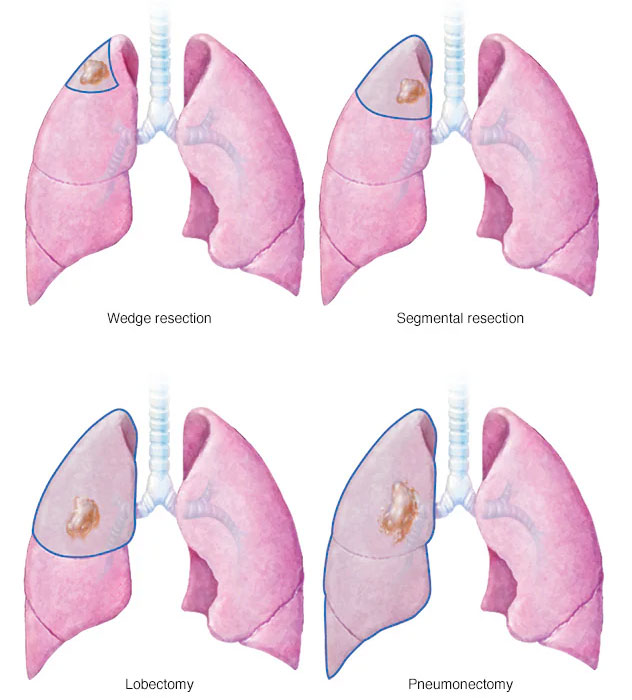
Lung surgery is often performed to treat conditions such as lung cancer, severe infections, or damaged lung tissue. Two common types of lung resection procedures are lobectomy and pneumonectomy. A lobectomy involves the surgical removal of one lobe of the lung and is the most frequently performed procedure for early-stage non-small cell lung cancer. It allows for the removal of diseased tissue while preserving as much lung function as possible. A pneumonectomy, on the other hand, involves the removal of an entire lung and is typically reserved for more extensive disease when a lobectomy is not sufficient.
These surgeries can be performed through open thoracotomy (traditional approach) or minimally invasive methods such as video-assisted thoracoscopic surgery (VATS) or robot-assisted surgery, depending on the patient’s condition and the surgeon’s assessment. Postoperative care focuses on pain management, breathing exercises, and gradual rehabilitation to improve lung function. While pneumonectomy involves a greater impact on breathing capacity, most patients adapt over time. Lung surgery plays a vital role in treating life-threatening conditions and can significantly improve prognosis and quality of life when performed in a timely manner.